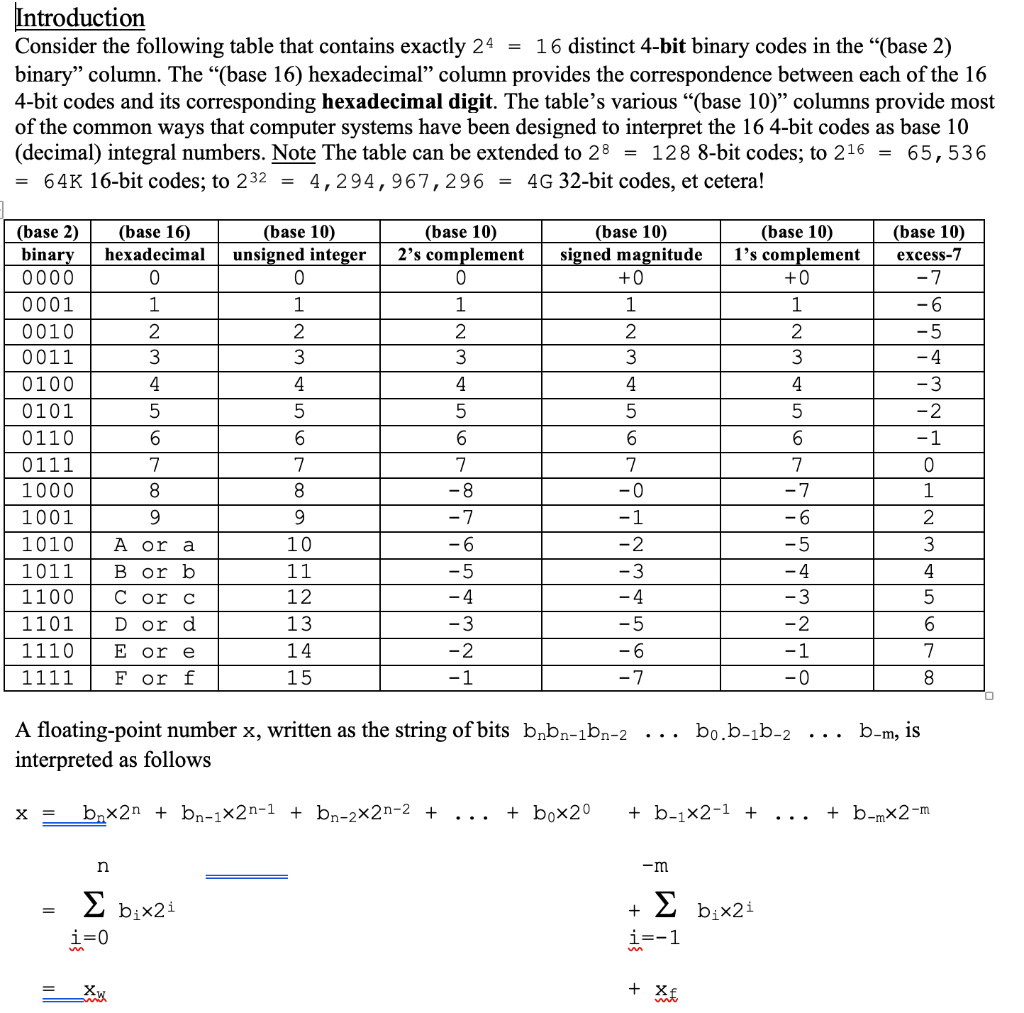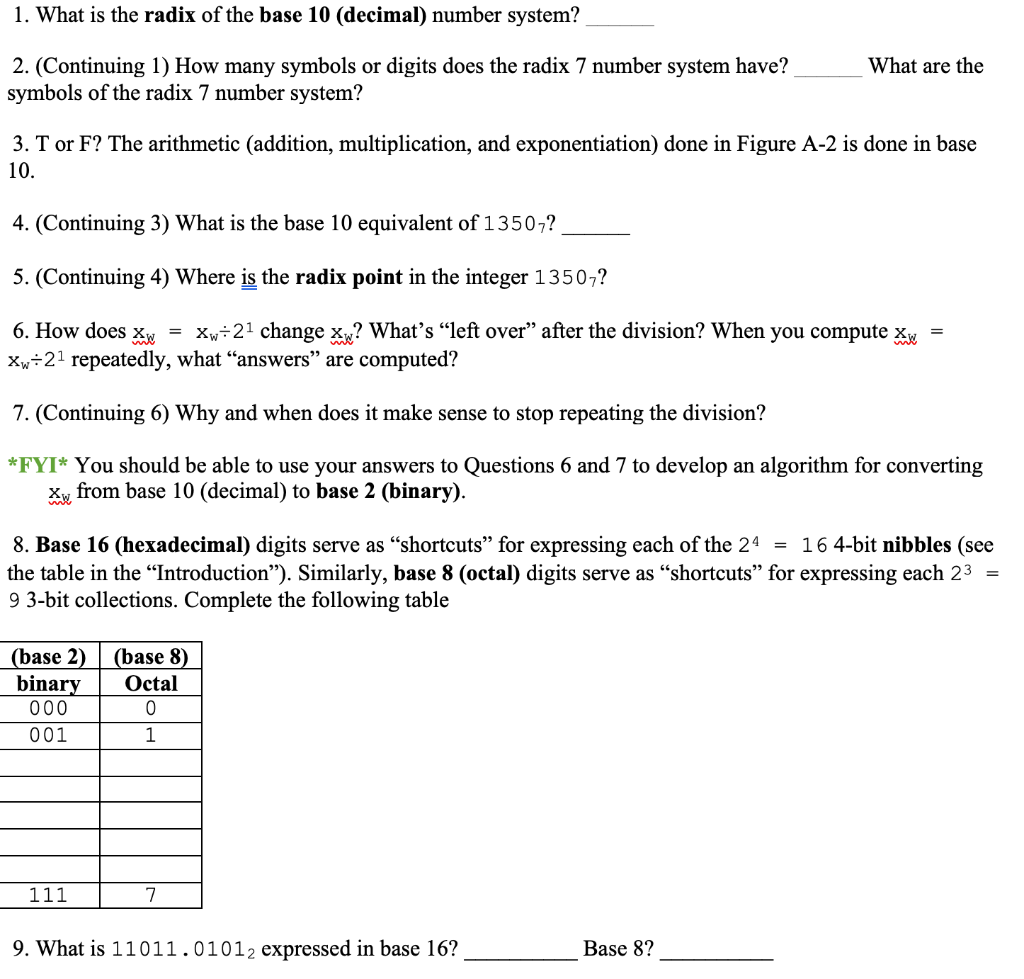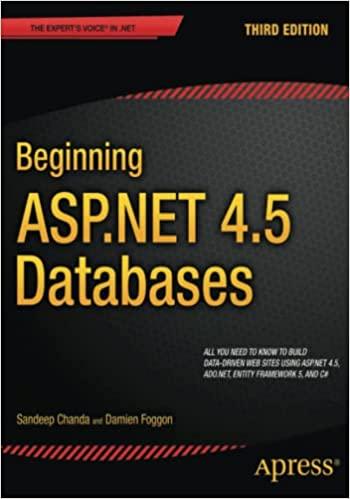

Introduction Consider the following table that contains exactly 24 = 16 distinct 4-bit binary codes in the (base 2) binary column. The (base 16) hexadecimal column provides the correspondence between each of the 16 4-bit codes and its corresponding hexadecimal digit. The table's various (base 10) columns provide most of the common ways that computer systems have been designed to interpret the 16 4-bit codes as base 10 (decimal) integral numbers. Note The table can be extended to 28 = 128 8-bit codes; to 216 = 65,536 64K 16-bit codes; to 232 = 4,294,967, 296 = 4G 32-bit codes, et cetera! = (base 10) 2's complement 0 1 (base 10) signed magnitude +0 1 (base 16) hexadecimal 0 1 2 3 4 5 6 7 (base 10) unsigned integer 0 1 2 3 4 5 6 (base 10) l's complement +0 1 2 3 4 5 2 3 2 3 4 5 6 4 (base 2) binary 0000 0001 0010 0011 0100 0101 0110 0111 1000 1001 1010 1011 1100 1101 1110 1111 (base 10) excess-7 -7 -6 -5 -4 -3 -2 -1 0 1 2 3 4 5 6 7 8 8 9 7 -8 -7 -6 -5 9 10 11 12 13 14 15 A or a B or b Cor C Dor d E or e For f 7 -0 -1 -2 -3 -4 -5 -6 -7 6 7 -7 -6 -5 -4 -3 -2 -1 -0 -4 -3 -2 -1 6 7 8 bo.b-1b-2 ... b-m, is A floating-point number x, written as the string of bits bybn-1bn-2 interpreted as follows x = bn2n + bn-1x2n-1 + bn-2x2n-2 + + box20 + b-1x2-1 + + b-mx2-m n -m b;x23 + E bx21 = i=0 i=-1 Xx + XE 1. What is the radix of the base 10 (decimal) number system? What are the 2. (Continuing 1) How many symbols or digits does the radix 7 number system have? symbols of the radix 7 number system? 3. T or F? The arithmetic (addition, multiplication, and exponentiation) done in Figure A-2 is done in base 10. 4. (Continuing 3) What is the base 10 equivalent of 13507? 5. (Continuing 4) Where is the radix point in the integer 13507? = 6. How does xx = xw=27 change xw? Whats left over after the division? When you compute xx Xw=21 repeatedly, what answers are computed? 7. (Continuing 6) Why and when does it make sense to stop repeating the division? *FYI* You should be able to use your answers to Questions 6 and 7 to develop an algorithm for converting Xw from base 10 (decimal) to base 2 (binary). 8. Base 16 (hexadecimal) digits serve as shortcuts for expressing each of the 24 = 16 4-bit nibbles (see the table in the Introduction). Similarly, base 8 (octal) digits serve as shortcuts for expressing each 23 = 9 3-bit collections. Complete the following table (base 2) binary 000 001 (base 8) Octal 0 1 111 7 9. What is 11011.01012 expressed in base 16? Base 8








